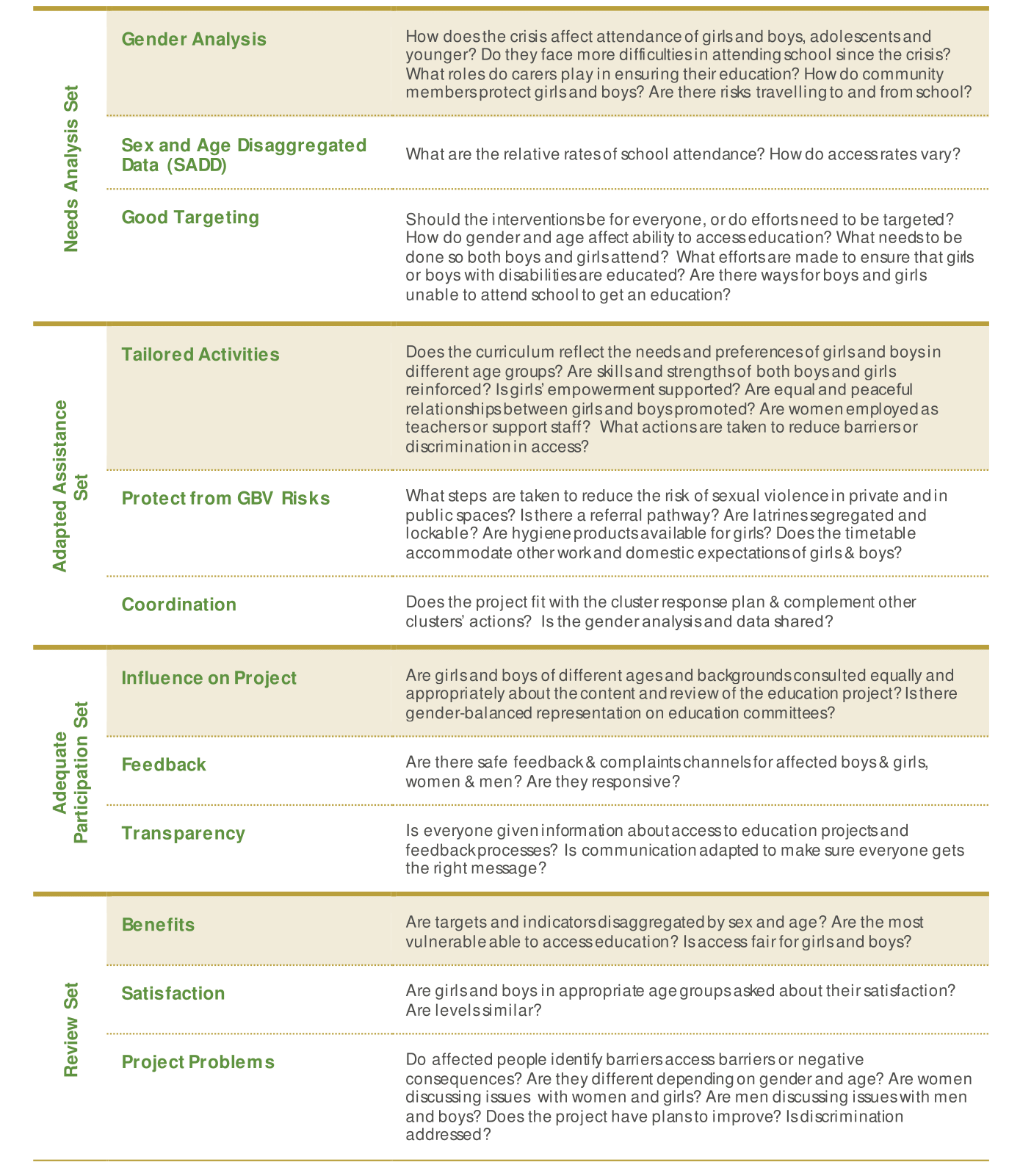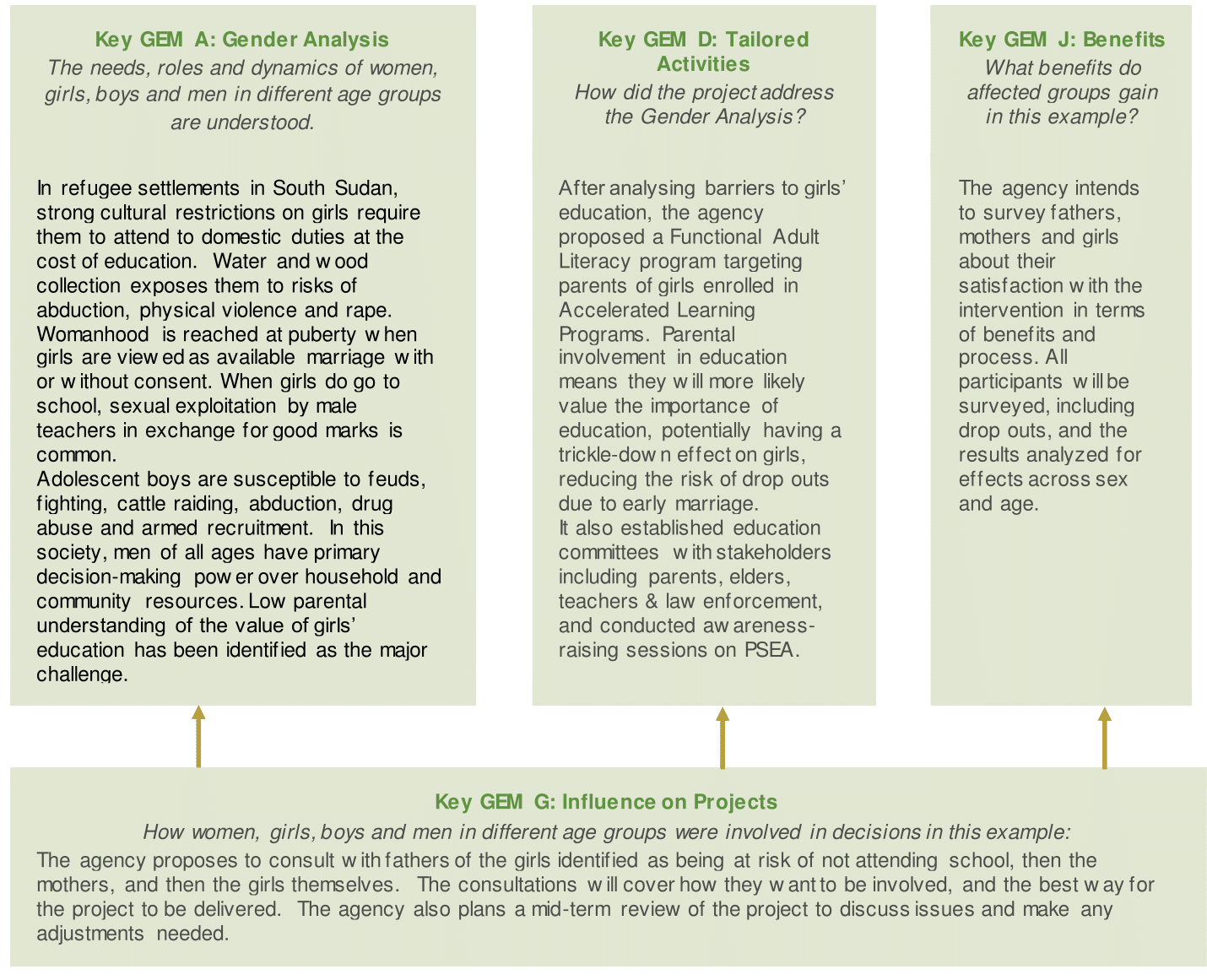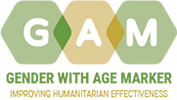Download the Education Tip Sheet
This Tip Sheet offers interventions, guiding questions and an example of how 4 Key Gender Equality Measures (GEMs) support gender equality in Education projects and programs. It should be read together with the GAM Overview. The IASC GAM identifies and codes projects based on the extent to which key programming elements are consistently present in proposals and implemented projects. Four steps (GEMs) are assessed in the design phase, and twelve GEMs are reviewed in monitoring.
Gender dynamics can affect learners’ ability to access and participate in education. Learning barriers are often different for males and females, who face different risks and have different needs. Sometimes gender dynamics are obvious, but they can also be subtle or hidden. Education projects can be made responsive and fair by:
- Addressing gender-based barriers so that all girls and boys, women and men can learn;
- Respecting differences based on gender, and acknowledging gender, together with age, ethnicity, language, disability, and religion are all part of a learner’s identity;
- Enabling education structures, systems and methodologies to be sensitive to all girls and boys, women and men;
- Ensuring gender parity in education as part of a wider strategy to advance gender equality in society;
- Continuously reviewing to close gender gaps and eradicate gender-based discrimination.[1]
Questions to inspire action:

Gender mainstreaming, or a targeted action?
Education activities may be specifically aimed at reducing or eliminating gender discrimination (targeted actions or T), or they may mainstream attention to gender equality (M) by addressing the distinct needs, roles and dynamics of girls and boys (or men and women) within a broader programme. For example, a project may work with schools to improve retention of girls by employing female teachers, providing segregated latrines and hygiene products; or it may focus on reducing recruitment of boys through recreational and livelihood activities (targeted actions). Alternatively, a project may aim to provide primary education for all children, with different activities for girls and boys in different age groups (gender mainstreaming.)
Example of Good Gender Equality Programming in EDUCATION
(GAM Code 4(T) – can you work out why? See the GAM Overview)

Using Gender Equality Measures in projects or cluster programs leads to better quality programming, responsive to gender and age issues.
[1] Gender Equality in and through Education: INEE Pocket Guide to Gender (2010)

